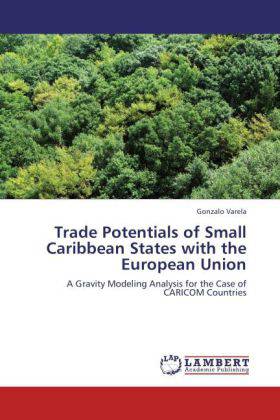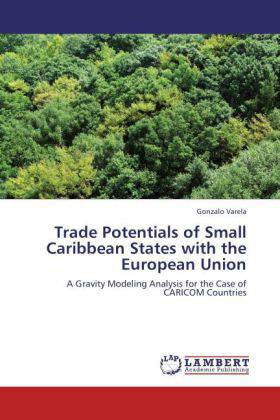
- Afhalen na 1 uur in een winkel met voorraad
- Gratis thuislevering in België vanaf € 30
- Ruim aanbod met 7 miljoen producten
- Afhalen na 1 uur in een winkel met voorraad
- Gratis thuislevering in België vanaf € 30
- Ruim aanbod met 7 miljoen producten
Zoeken
Trade Potentials of Small Caribbean States with the European Union
A Gravity Modeling Analysis for the Case of CARICOM Countries
Gonzalo Varela
Paperback | Engels
€ 60,95
+ 121 punten
Omschrijving
The Caribbean integration process started in the 1960s with the CARIFTA Agreement, then evolving to what is today known as CARICOM, including fifteen Caribbean countries. The original impetus was based on traditional customs union theory and the gains from trade, and its articulated goals, according to the official documents of the Secretariat, were to overcome the condition of underdevelopment as represented by economic weakness, underemployment, agricultural backwardness and dependence through national and regional policies aimed at promoting social and economic development. Increased trade can contribute to achieve the aforementioned goals. This monograph describes the theoretical literature on the gains from trade, in particular on a particular arrangement of international trade: Preferential Trade Agreements. It then uses a gravity modeling approach to explain the trade patterns of CARICOM economies, and estimates the international trade trade potential that CARICOM economies face with the European Union.
Specificaties
Betrokkenen
- Auteur(s):
- Uitgeverij:
Inhoud
- Aantal bladzijden:
- 88
- Taal:
- Engels
Eigenschappen
- Productcode (EAN):
- 9783659141812
- Verschijningsdatum:
- 31/05/2012
- Uitvoering:
- Paperback
- Afmetingen:
- 152 mm x 229 mm
- Gewicht:
- 141 g

Alleen bij Standaard Boekhandel
+ 121 punten op je klantenkaart van Standaard Boekhandel
Beoordelingen
We publiceren alleen reviews die voldoen aan de voorwaarden voor reviews. Bekijk onze voorwaarden voor reviews.








